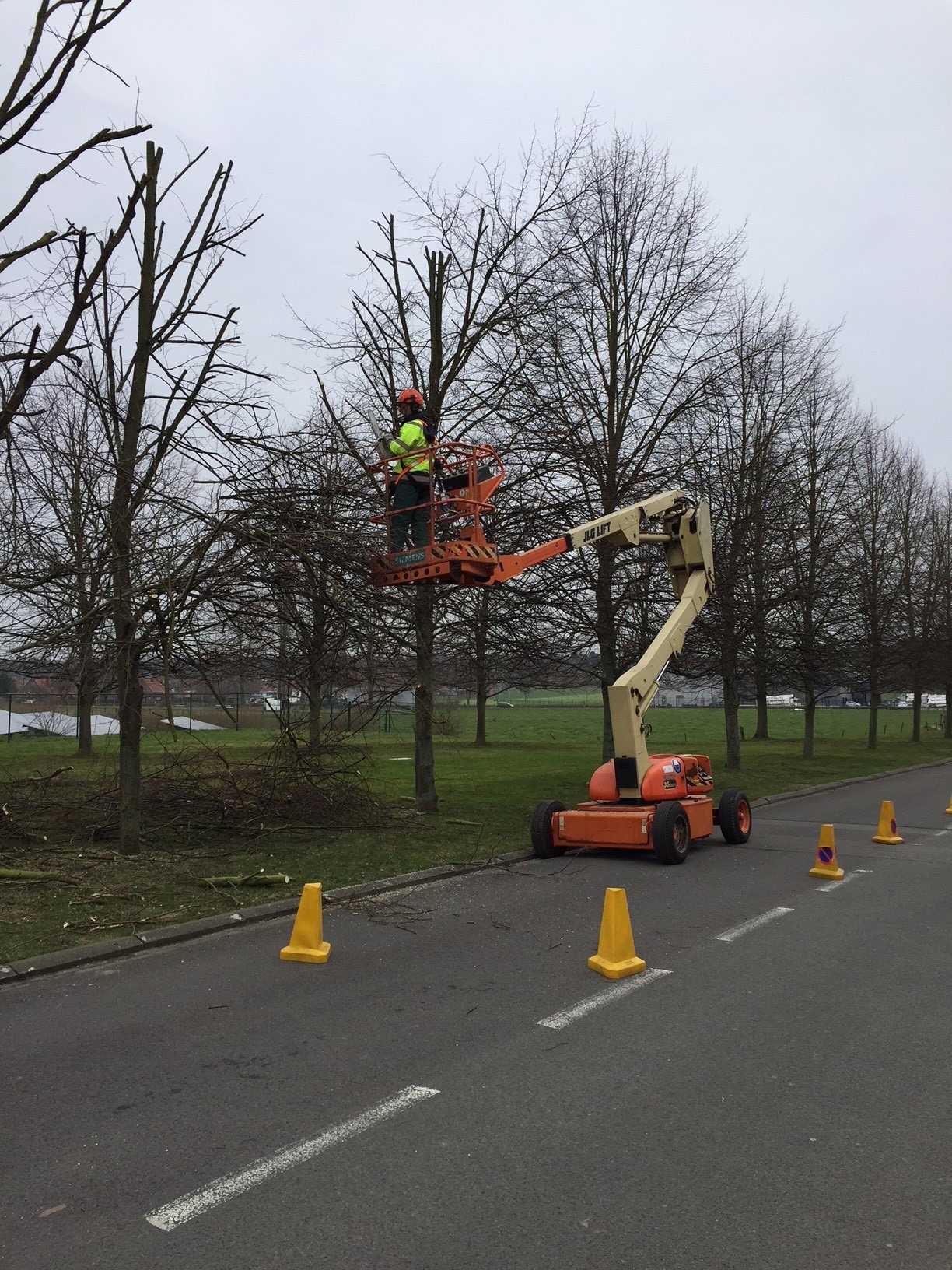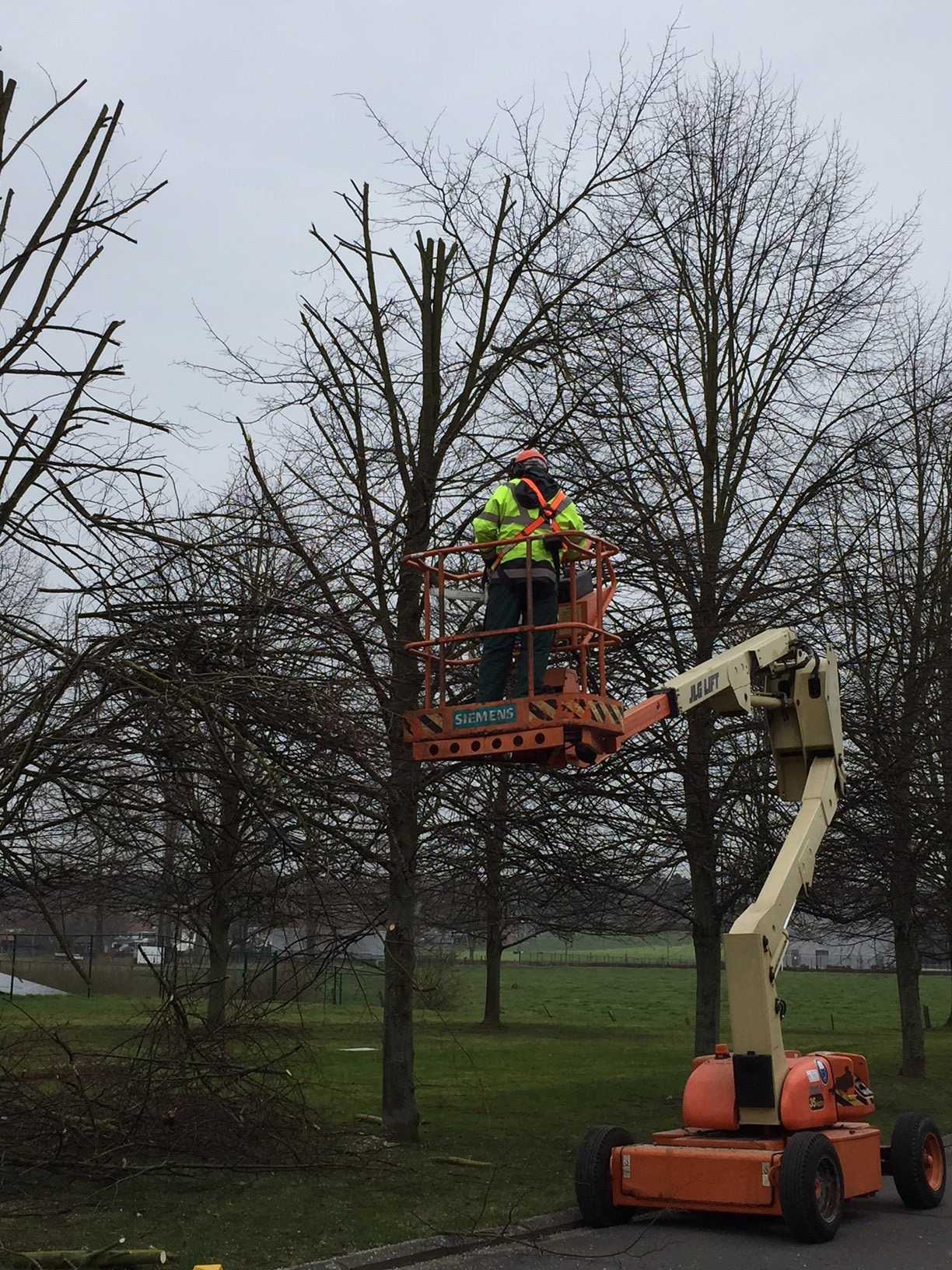AMAB, your partner for the winter pruning of your trees
Regular pruning is important for the healthy growth of trees and shrubs. After all, pruning ensures new growth! But what is the best way to prune, and at what time? Let AMAB explain.
When should trees be pruned?
The best period for pruning a tree depends on the type of tree and on the intended extent of the pruning.
It is best to prune pollarded trees, such as oaks, alders or poplars, from November through February. Espaliers, or trained trees, (chestnut, hornbeam, plane trees, lime trees) and fruit trees (apple, pear, plum) may also be pruned in March, so from November through March.
The so-called ABC trees, such as the maple, the birch and the hornbeam, may not be pruned in the winter. In spite of the cold, they will ‘bleed’ significantly and lose a great of sap via the pruning wounds. The reason for this is the way the sap flows in these trees. ABC trees are therefore an exception, and you should only prune them when they are in full leaf (June through the end of October).
In summary:
- Pollarded trees: November through the end of February (once every five years is usually enough)
- Espaliers: November through the end of March (prune annually)
- Fruit trees: November through the end of March (prune annually)
- ABC trees (maple, birch, hornbeam, nut trees): only in the summer months (June through the end of October)
Minor maintenance pruning (summer pruning) can be done from June through the end of October. After summer pruning, the branches will sprout again nicely, and pruning allows sufficient light to reach all parts of the tree.
Important pruning tips
Pruning trees is something of an art, and therefore significant experience is necessary to master this skill.
- Use sharp tools: This will prevent frayed pruning wounds, where moulds and bacteria can grow.
- Remove double burrs (competitors) as much as possible. This way you end up with one main branch that grows straight up.
- Do not prune more than one third of the crown at any one time. If you remove too much of the tree while pruning, the tree will grow water sprouts. Water sprouts are straight branches that grow very quickly, and which will never bear any fruit.
- Always prune dead wood and prevent branches from rubbing up against one another.
- Do not prune fruit trees in rainy weather. Their wounds are extra sensitive to the adverse effects of moulds, leading to an increased risk of fruit tree cancer.
The AMAB approach
- Before making a detailed price quotation, we first visit your trees and make a thorough analysis of the pruning work required.
- We provide all pruning tools, such as chain saws, cherry pickers, wood chippers etc.
- If required, we will perform a risk analysis before starting.
- We adhere to the safety regulations and have all necessary PPE (personal protection equipment), such as reinforced shoes, trouser and leg protectors, reinforced jackets, helmets with openwork visors, hearing protection, harnesses, …
- We demarcate a safety zone around the trees using hazard cones.
- We always work with a pruner and a ground man, who is responsible for the safety of passers-by.
Are you a company or do you have a VAT number? And does your garden need a one-time maintenance servicing or would you like to schedule an annual maintenance servicing? Then contact AMAB, and we will stop by at a time that works for you.





